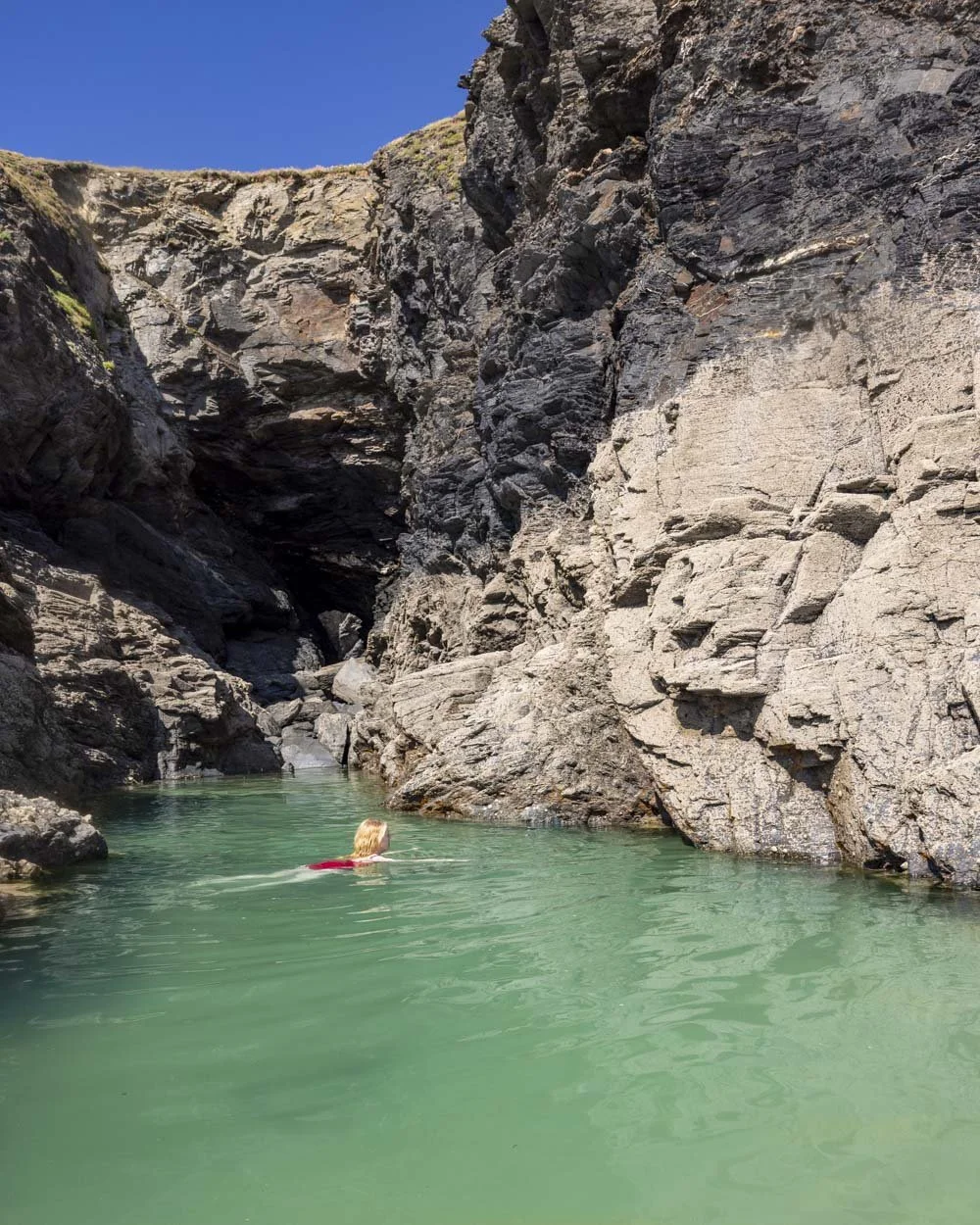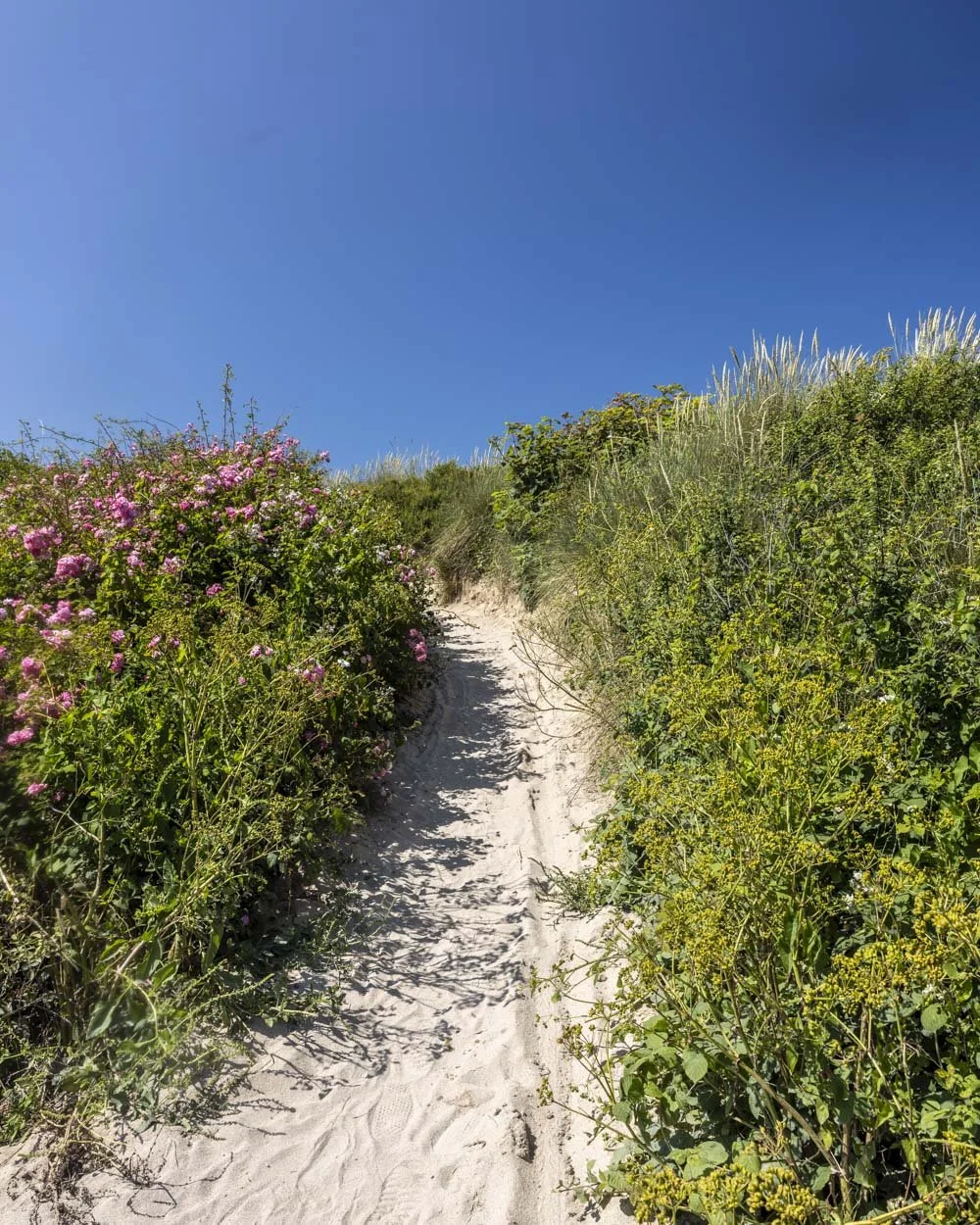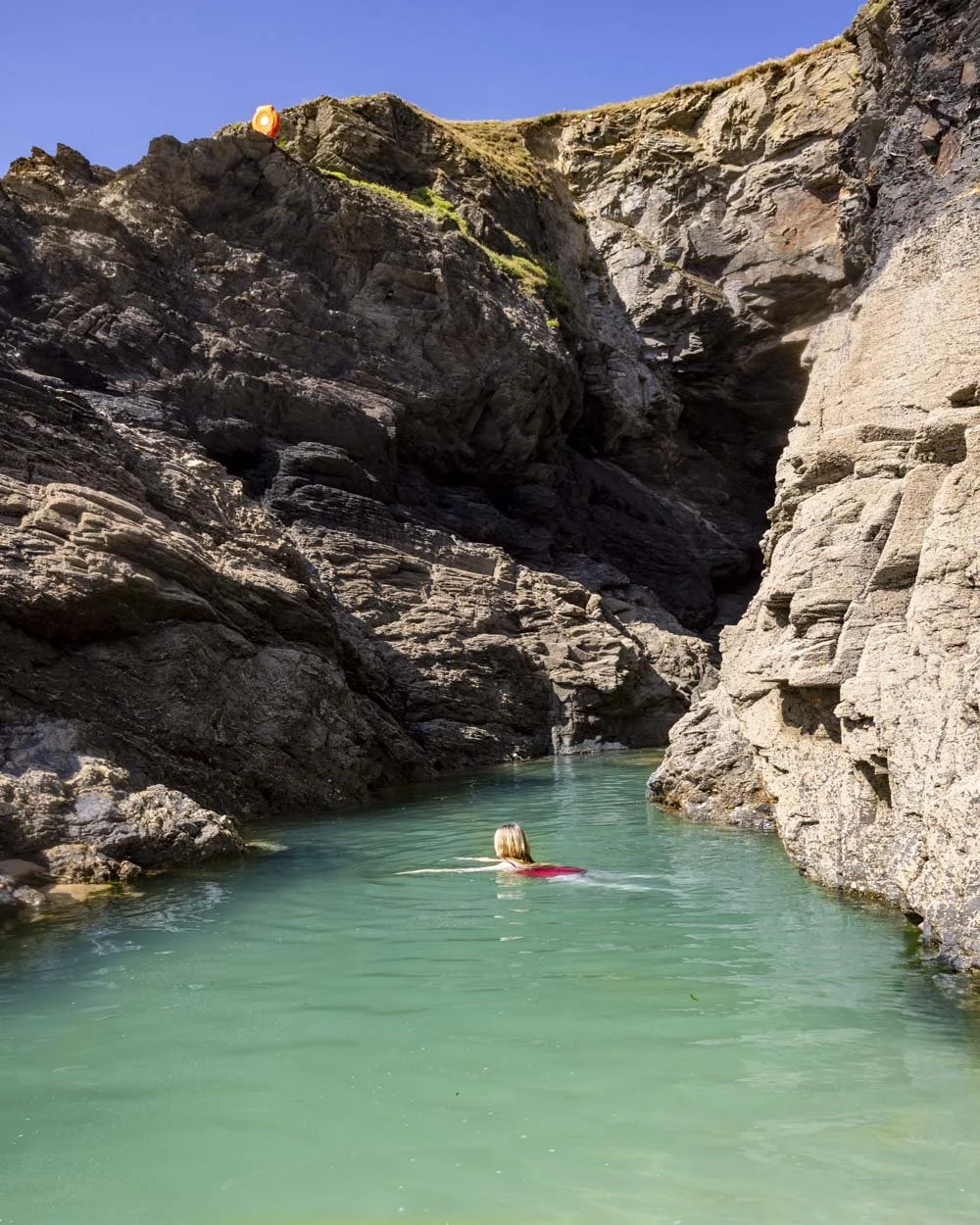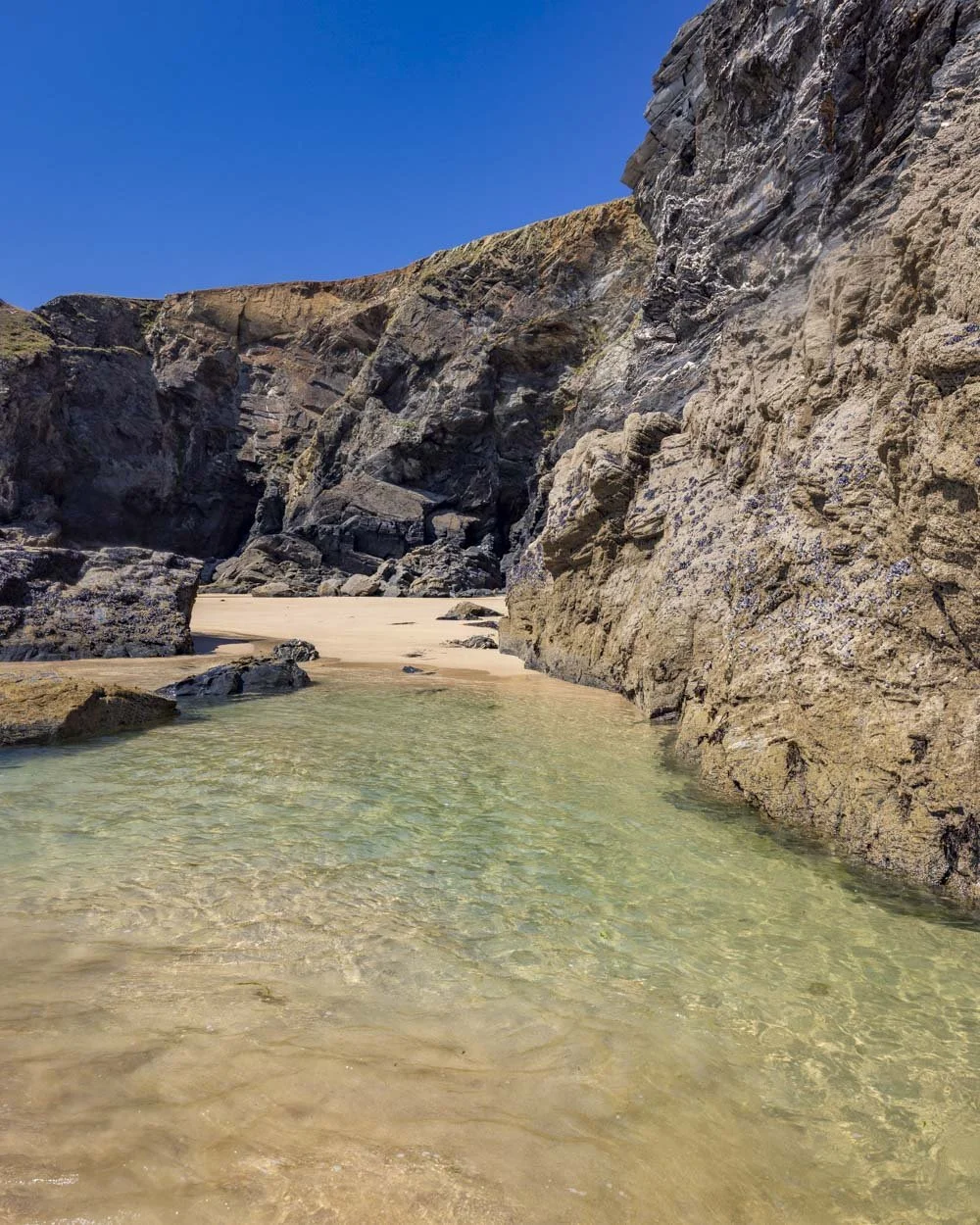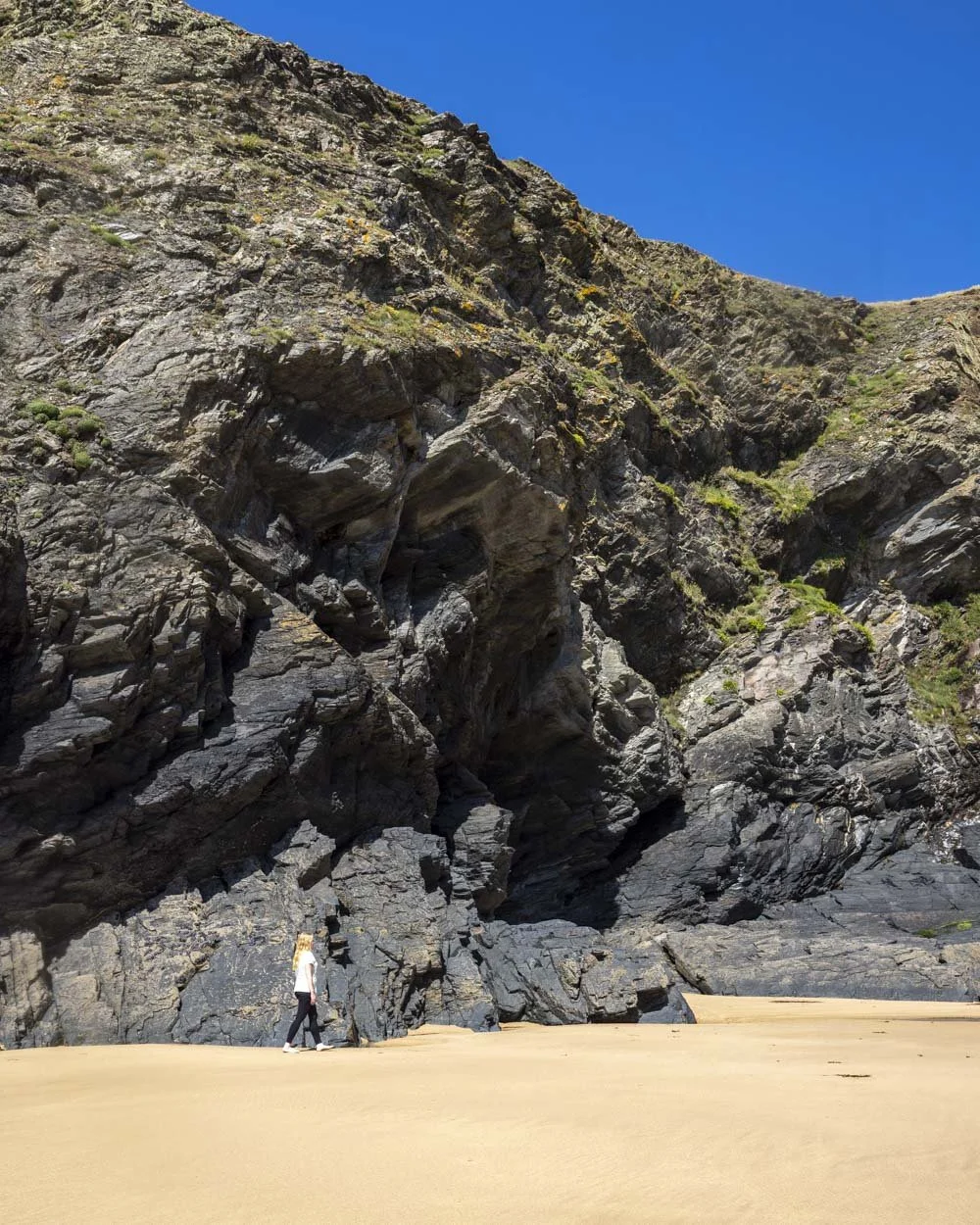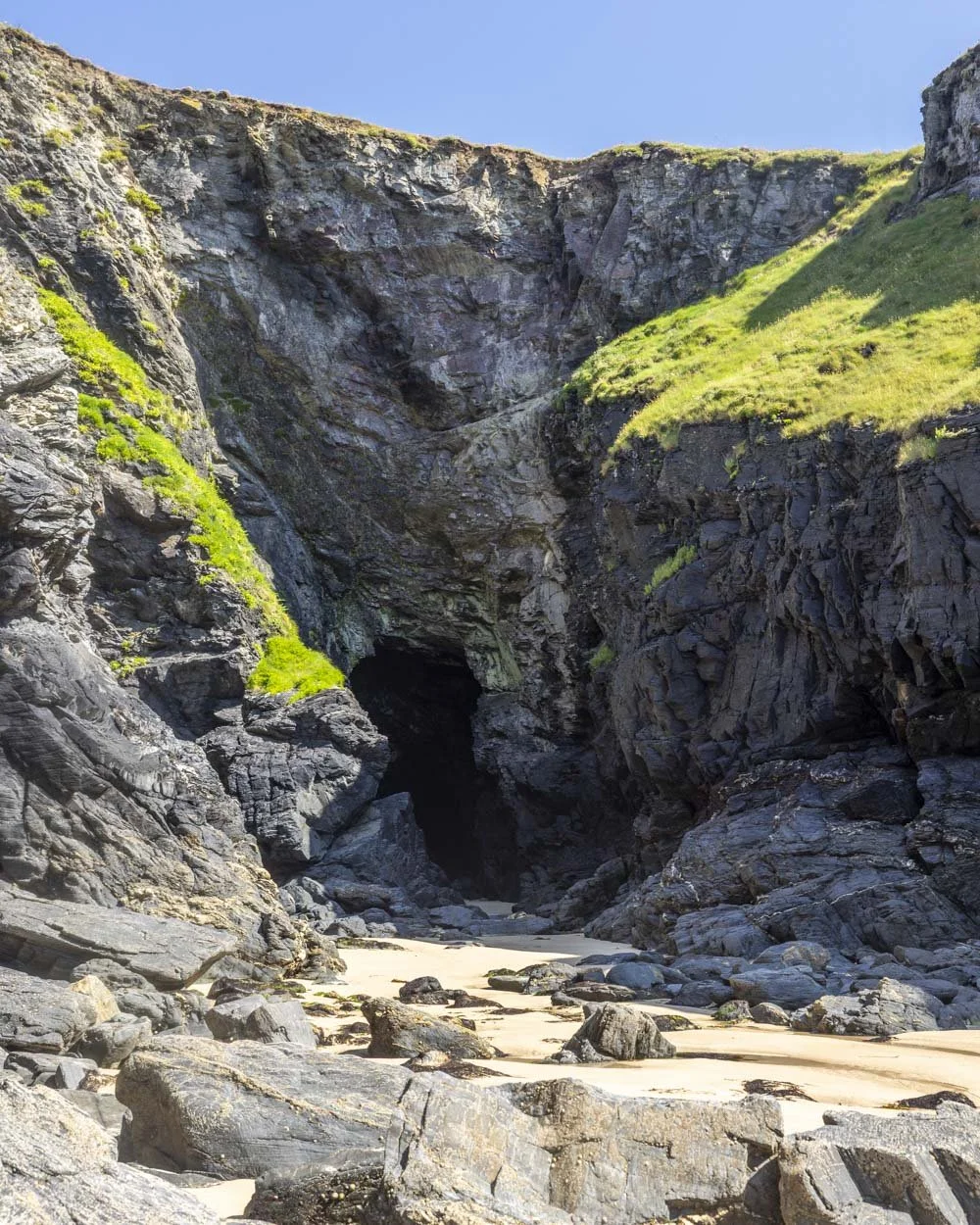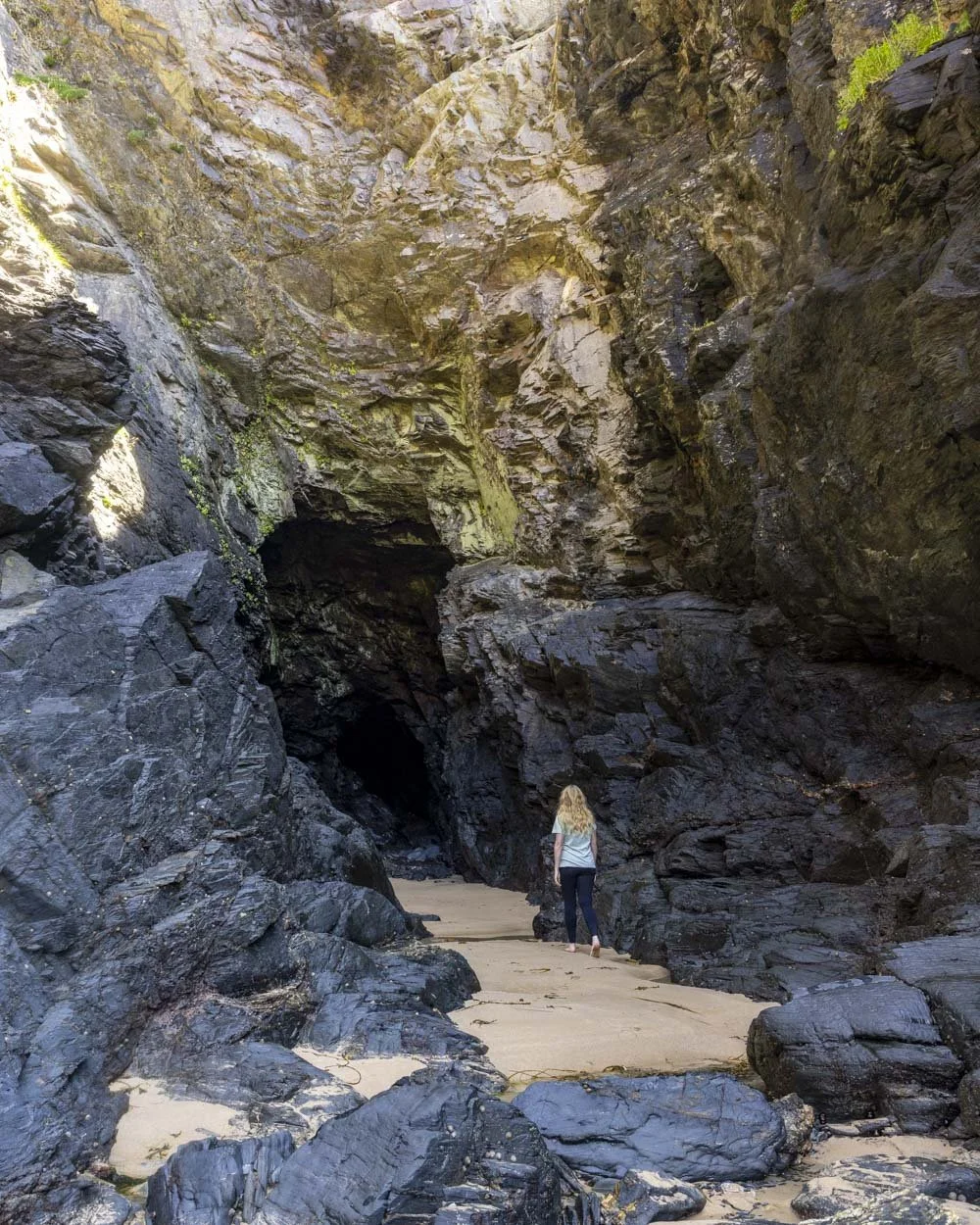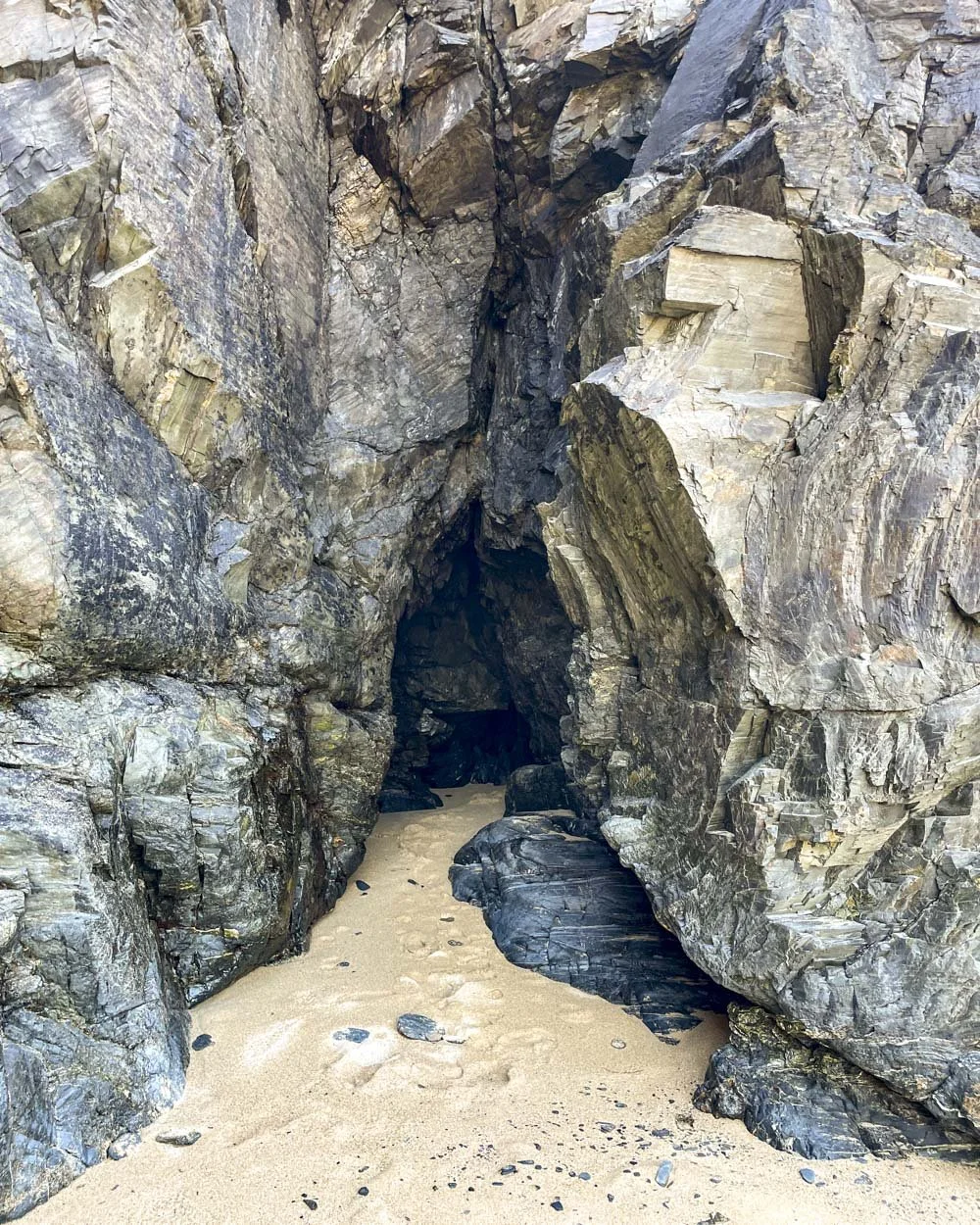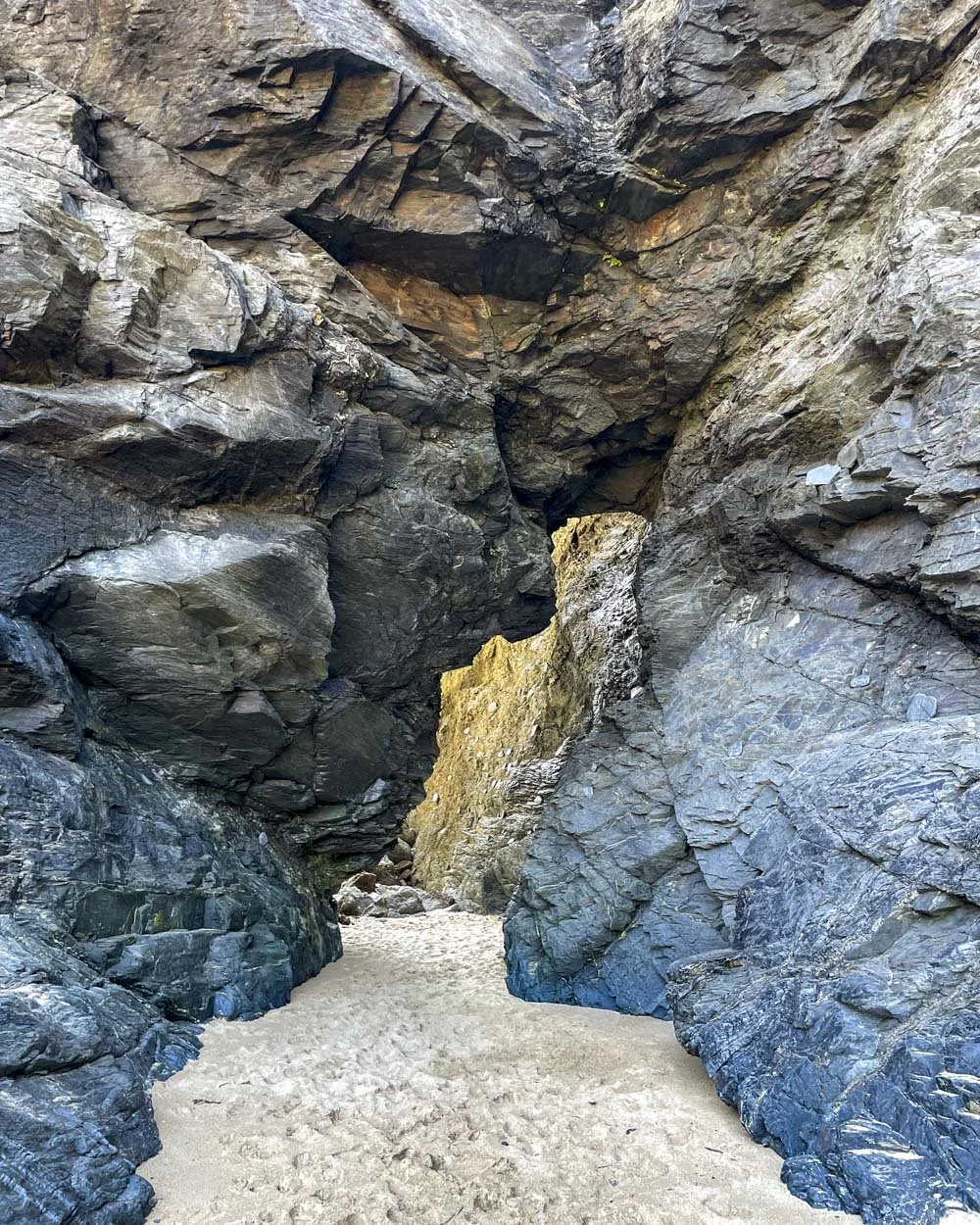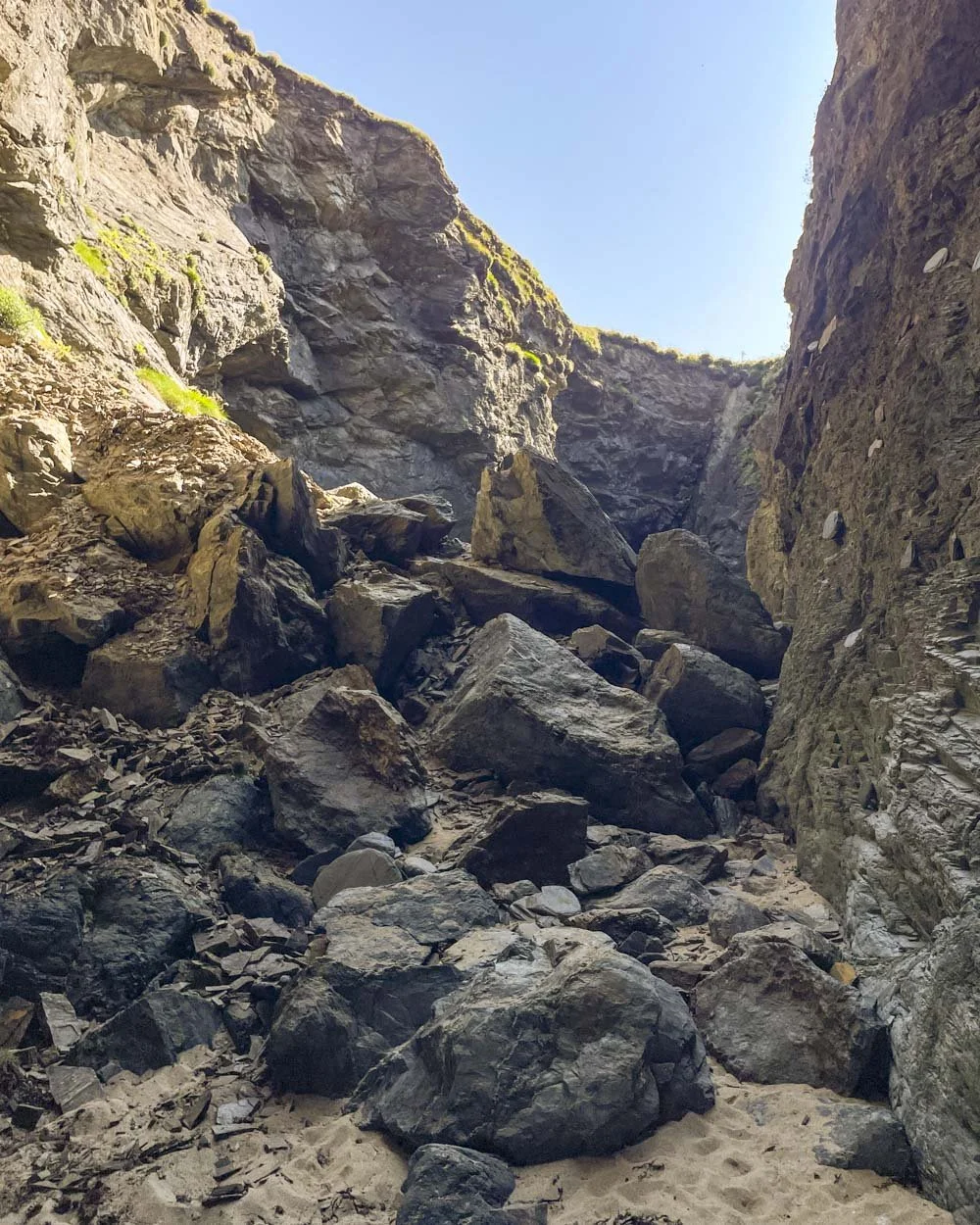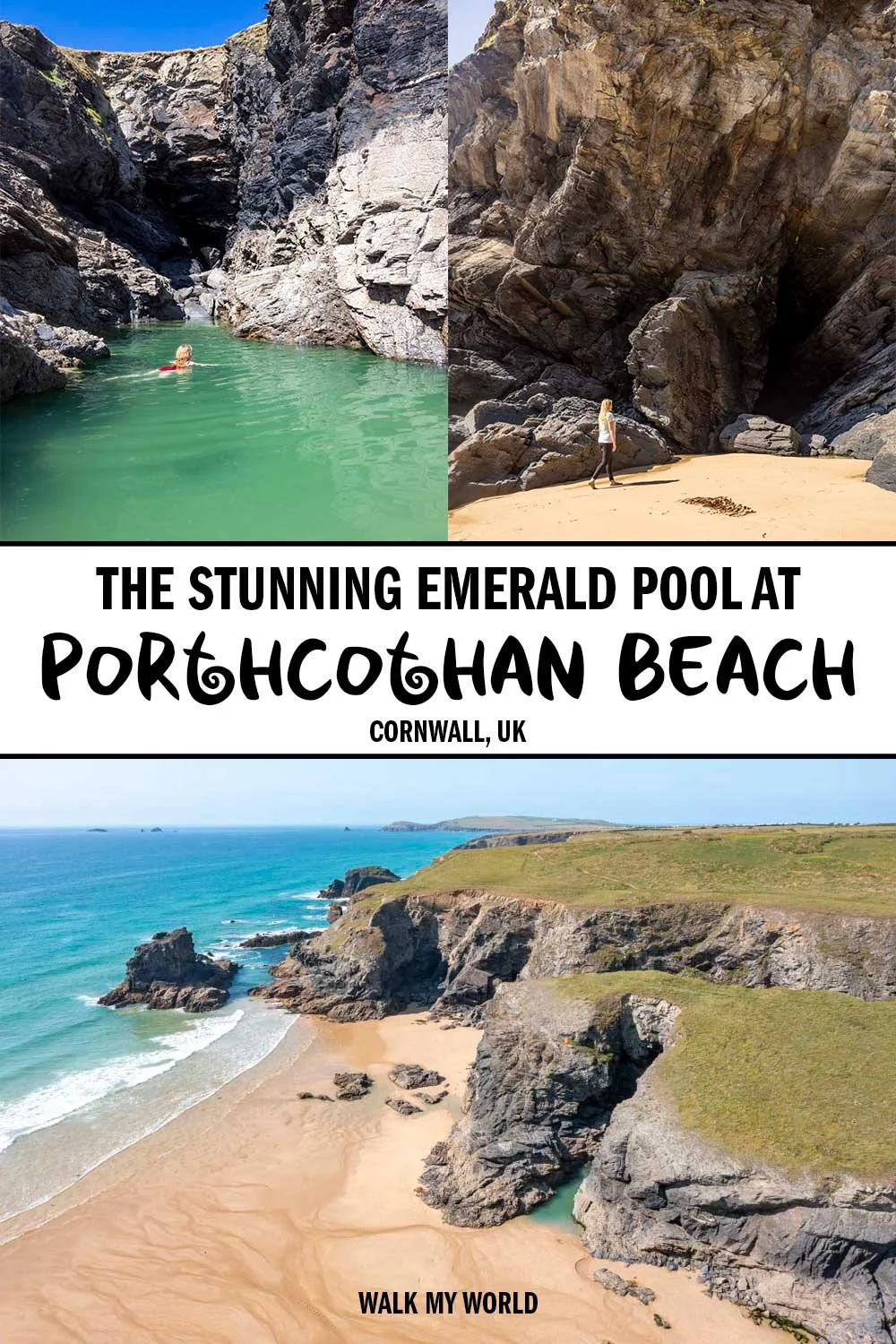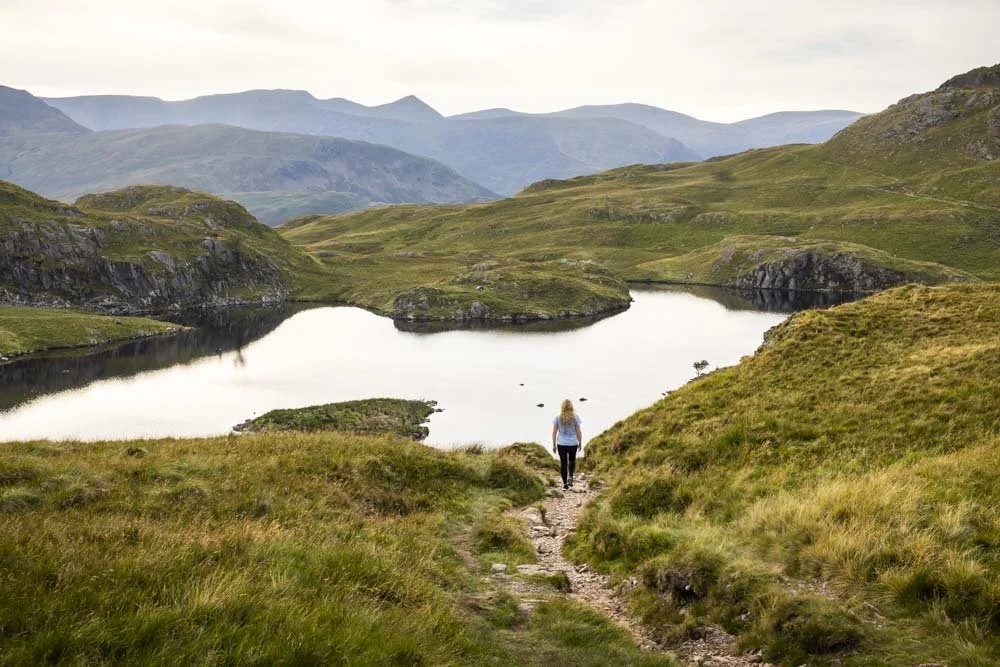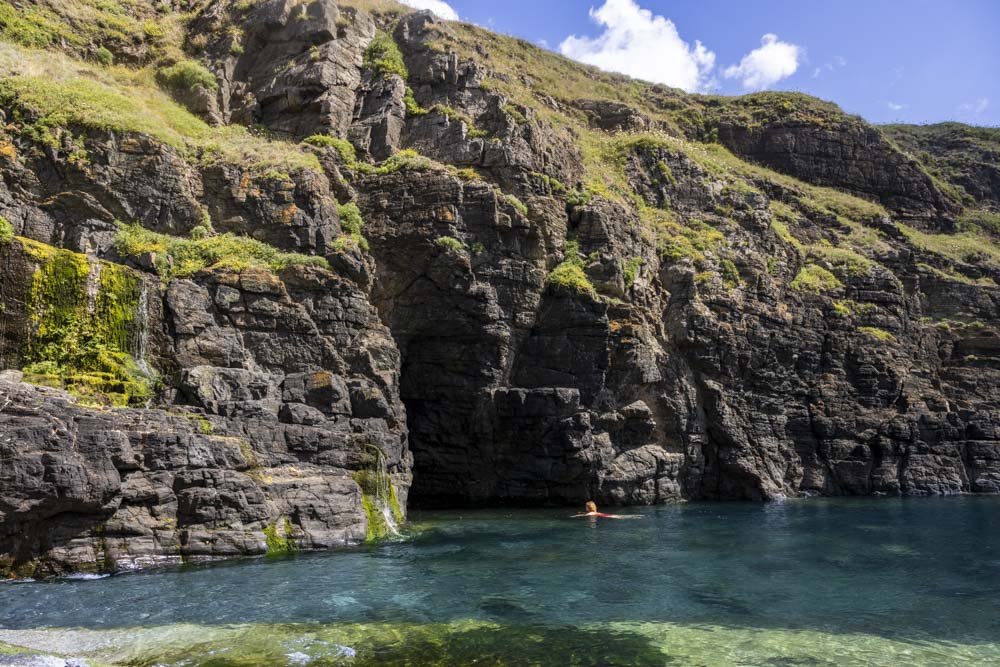In a county of picturesque beaches, Porthcothan Beach stands out for its wild beauty. Whilst you don’t get the calm turquoise water and pristine golden sand you’ll find at some of the more sheltered coves, it more than makes up for it with fabulous sea caves and an incredible emerald lagoon.
For sheltered swimming in clear calm water beneath towering cliff walls, it’s hard to think of a more atmospheric spot. Just make sure you time your visit for when the tide is low enough to access all these treasures.
Here’s everything you need to know about visiting Porthcothan Beach.
Visiting Porthcothan Beach
The tide and swell
Although the beach can be visited at any time of day, to access the rockpool and sea caves you want to visit a few hours either side of low tide.
At this time it doesn’t really matter about the swell because the sea will be far enough back that it won’t affect the pool or sea caves.
You can extend this window a little if you don’t mind getting a bit wet when crossing to the second cove where the best sea caves are (even a couple of hours before low tide there is one small knee deep pool to cross).
Swimming at the Emerald Lagoon
From the nearest car park (Porthcathon long stay car park) the beach is 100m away. You need to cross the road opposite the car park and then head down the narrow sandy track.
You then need to cross almost the full length of the beach, keeping to the right side to find the rockpool, which is located 650m from the car park, or 550m from the start of the beach. You can’t miss it when you’re up close, but until then you won’t see it.
It’s a deep cleft in the rock walls which fills up at high tide creating a shimmering emerald lagoon. It’s much warmer than the sea and access couldn’t be easier.
You simply step from the sand into shallow water which quickly becomes deep enough to swim.
Much of the pool is shoulder height and above and the water has a glorious emerald hue, yet you can see right through to the bottom. It’s an idyllic place for a swim, sheltered from the sea and under the soaring cliff walls.
It’s the other side of one of the sea caves you can access by walking around to the next cove along, but it doesn’t feel like a cave as it’s open to the elements.
Make use of that fact by visiting on a sunny day, which is when the water colour will be at its most spectacular.
The depth and colour of the pool will vary slightly depending on the height of the tide, but there’s always a pool to swim in as long as you get the tides right.
In terms of how busy it gets, due to its ease of access it’s a popular spot, but there’s often a gap between visitors even if you come in the middle of the day in summer as we did.
However, for total serenity, if tides allow, you would be best off visiting early in the morning.
Exploring the sea caves
There are caves on the right and left side of the beach, but the best and most numerous are on the right side.
From the rockpool, continue along the sand around to the right and you will come to a small pool, or a rather large puddle depending on your perspective.
This was knee deep on our visit a couple of hours before low tide. Cross this pool, which is just a few steps long and you will come to a completely different part of the beach, it’s almost like a separate cove.
The scenery is staggering, with rugged cliffs that make you feel tiny and the gaping mouths of five distinct caves.
Each can be walked into with varying degrees of rock hopping involved. The first couple on the left side of the cove are the easiest to get into, with minimal rock hopping.
The rock sparkles pink, red and gold, almost like glittering paint has been splashed across the walls.
None of them go very far back, but they are all worth a look and completely set back from the sea, so it’s dry inside but for a few easily avoidable puddles here and there.
The first one you’ll see on the right side of the sand offers a window through to the rockpool, though you can’t really see it due to the sheer amount of rock between you and it.
If you want to explore further you can also cross back to the main beach and head to the caves on the other side. Most are kiddy-sized hidey holes, but one goes quite far back and has full sandy access so there’s no rocks at all to negotiate, which makes it one of the easiest caves to explore.
It’s slightly less colourful than the ones in the other cove closer to the rockpool, but you can get further in more easily, almost far enough to require a torch.
Just beyond this cave you’ll see a huge natural doorway which leads to a large jumble of rocks. They are sharp and loose in places, but it’s still straightforward enough to climb a few steps up to look into a rocky bowl, which I assume fills with water at high tide.
You can hear the waves crash against the rocks just beyond it and it feels very dramatic.
You may be able to continue further around to more caves, but this was the end of where we could get to whilst keeping dry. Let us know if you venture further!
Keep them wild
Please remember to take all rubbish with you and keep these places wild and pristine - as with anywhere in the outdoors. It’s important to leave them exactly as you found them so they will remain beautiful for generations to come.
Litter tends to breed litter, so if you do spot any and are able to pick it up and dispose of it outside the area, it will go a long way to keeping the area clean.
Parking for Porthcothan Beach
The closest car park to Porthcothan Beach is the Porthcothan long stay car park, postcode PL28 8LP, which you can see on Google maps here. The current charges for the car park are:
Up to 1 hour: £2.30
2 hours: £4.60
3 hours: £5.80
4 hours: £6.80
All day: £10.50
There is a public toilet available at the car park.
This post may contain affiliate links, meaning at no additional cost to you, that we will earn a small commission if you click through and decide to make a purchase. This helps towards the costs of running our website. Thanks for your support.

